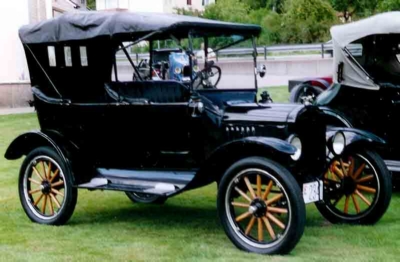The Ford Model A was produced from 1928-1931 (there was also a Model A produced from 1903-1904). The sedan was the successor to the legendary Model T, the famous car known for being the first assembly line produced car and for bringing affordable cars to America's middle class for the…
The Model T : One of America’s Most Important Cars
The Ford Model T has a rich and storied background to it and has become known as one of the most important cars in the history of the industry, but how did it get this way? In the beginning, Henry Ford’s plant assembled cars from components purchased mainly from the Dodge brothers, who were making huge profits from the arrangement and their shares in the company. This rankled Mr. Ford, as did his partnership with Alexander Malcomson. The latter had a liking for large cars that Henry felt would lead to financial disaster, so in 1905 Ford set up his own manufacturing company to produce engines and transmissions. A year later Malcomson was ousted from the firm.

Ford soon realized that he needed to make all the components if the company was to be truly profitable. Thus, in 1910, he completed a factory at Highland Park six times larger than the previous one which, by the way, still exists, though not for the purpose of manufacturing automobiles. It was in a partitioned-off section of this historic Piquette Avenue plant that Henry Ford and a small team of specialists began working on a car that would soon play an enormous part in the growth of the automobile industry. That car was the Model T.
Initial production was small in number but when Ford initiated a moving assembly line in 1913, things changed radically. For example, 17,771 cars were sold in 1909, a year after the Model T was launched; in 1914 some 308,162 cars were delivered.
Two other factors were key to the Model T’s success, however: It was tough, and it was cheap. The former was important at a time when there were more ruts than roads and more Americans were living on farms than in cities. As for pricing, Henry Ford reasoned the cars should be cheap enough that his own workers could afford to buy one.
By 1924 the cheapest two-passenger Model T cost a mere $260. At that price it was pretty basic; causing the growth of a vast industry of dedicated accessories. The Sears Roebuck catalog alone offered more than 5000 different accessories for the Model T. Engine performance could be modified (Model T racers were common then), complete bodies were available; even the T’s obsolete transmission could be exchanged for a more modern design.
In spite of his genius Henry Ford was frequently dogmatic and stubborn. His 1914 determination, as a cost reduction, that every Model T must be black continued until 1926 when other colors were again offered. Indeed, the T remained in production long after it should have been replaced with a new model. Its successor, the Model A, was not launched until 1927; by then 63,000 workers were out of a job and 23 assembly plants had been shut down. Henry believed that a car’s purpose was simply to get from place to place and blamed incompetent dealers.
Still, the Model T became an enduring symbol and the stuff of legends. Until recently surpassed in numbers by the Volkswagen Beetle, more T’s had been made than any car in history. In 2000, an international jury named it “The Car of the Century.” Even now, thousands are still running, lovingly cared for by enthusiasts the world over.
Though there is much to be celebrated in Ford’s 110th year, the Model T will certainly hold center stage as the car that put America on wheels.







